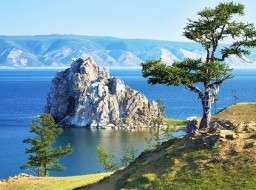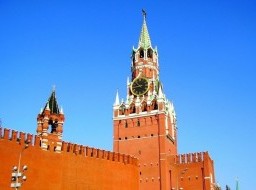Hohhot
Hohhot, abbreviated in Chinese as Hushi, formerly known as Kweisui, is the capital of Inner Mongolia in the north of the People's Republic of China, serving as the region's administrative, economic and cultural center. Its population was 2,866,615 inhabitants at the 2010 census, of whom 1,980,774 lived in the built-up (or metro) area made up of 4 urban districts. The name of the city in Mongolian means "Blue City", although it is also wrongly referred to as the "Green City". The color blue in Mongol culture is associated with the sky, eternity and purity. In Chinese, the name can be translated as Qīng Chéng (Chinese: 青城; literally: "Blue/Green City") The name has also been variously romanized as Kokotan, Kokutan, Kuku-hoton, Huhohaot'e, Huhehot, Huhot, or Köke qota. HistoryEarly historyDuring Warring States period, the area around Hohhot was part of Zhao state. In most time of Imperial China, Hohhot area was under control of Chinese dynasties and played an important role in defense against northern nomadic people' invasion. Ming and Qing eraIn 1557, the Tümed Mongol leader Altan Khan began building the Da Zhao Temple on the Tümed plain in order to convince the Ming dynasty (1368–1644) government of his leadership of the southern Mongol tribes. The town that grew up around this temple was called the "Blue Town" (Kokegota in Mongolian). The Ming had been blockading the Mongols' access to Chinese iron, cotton, and crop seeds, in order to dissuade them from attacking the North China plain. In 1570, Altan Khan successfully negotiated the end of the blockade by establishing a vassal-tributary relationship with the Ming, who changed Kokegota's name to Guihua (traditional Chinese: 歸化; simplified Chinese: 归化; pinyin: Guīhuà; postal: Kweihua; literally: "Return to Civilization") in 1575. The population of Guihua grew to over 150,000 in the early 1630s as local Mongol princes encouraged the settlement of Han Chinese merchants. There were occasional attacks on Guihua by Mongol armies, such as the total razing of the city by Ligdan Khan in 1631. Altan Khan and his successors constructed temples and fortresses in 1579, 1602 and 1727. The Tümed Mongols of the area had long since adopted a semiagricultural way of life. Hui merchants gathered north of the gate of the city's fortress, building a mosque in 1693. Their descendants formed the nucleus of the modern Huimin district. After the Manchus founded the Qing dynasty (1644–1911), the Kangxi Emperor (reigned 1661–1722) sent troops to control the region, which was of interest to the Qing as a center of study of Tibetan Buddhism. Just northeast of Guihua the Qing built the strong garrison town of Suiyuan (綏遠; 绥远; PRC Standard Mandarin: Suíyuǎn, Taiwanese Standard Mandarin: Suīyuǎn, from which they supervised the defense of southwestern Inner Mongolia against Mongol attacks from the north in 1735–39. Guihua and Suiyuan was merged into Shanxi province and became Guihua County (歸化縣; 归化县; Guīhuà Xiàn) of Qing China. French missionaries established a Catholic church in Guihua in 1874, but the Christians were forced to flee to Beijing during the antiforeign Boxer Rebellion of 1899–1901. Republican eraIn 1913, the government of the new Republic of China united the garrison town of Suiyuan and the old town of Guihua as Guisui (traditional Chinese: 歸綏; simplified Chinese: 归绥; pinyin: PRC Standard Mandarin: Guīsuí, ROC Standard Mandarin: Guīsuī; postal: Kweisui). Guisui town was the center of Guisui County (歸綏縣; 归绥县; PRC: Guīsuí Xiàn, ROC: Guīsuī Xiàn) and the capital of Suiyuan Province in northern China. A bubonic plague outbreak in 1917 and the connection of Guisui to railway links in Shanxi, Shaanxi, Hebei, and Beijinghelped renew the economy of Guisui town by forming links with eastern China and western China's Xinjiang province. In 1918, the American specialist on Inner Asia Owen Lattimore noted Guisui's ethnic composition as "a town purely Han Chinese except for the Lama monasteries ... the Tümeds are now practically nonexistent and the nearest Mongolians are to be sought at 50 or 60 miles distance on the plateau." During the progressive Japanese invasion of China in the 1930s, the Japanese created the puppet state of Mengjiang headed by Prince De, who renamed Guisui "Blue City" ("Hohhot"(Chinese: 厚和) or Huheshi). After the surrender of Japan in 1945, the Republic of China changed the name back to Guisui. The Communist Party of China's forces drove out General Fu Zuoyi, the Republic's commander in Suiyuan, during the Chinese Civil War, and after the Chinese Revolution in 1949, Guisui was renamed Hohhot. People's Republic eraDuring the Civil War, in order to gain the support of separatist Mongols, the Communists established the Inner Mongolia Autonomous Region in Mongol-minority areas of the Republic's provinces of Suiyuan, Xing'an, Chahar, and Rehe. Guisui was chosen as the region's administrative centre in 1952, replacing Zhangjiakou. In 1954, after establishment of the People's Republic of China, the city was renamed from Guisui to Hohhot, though with a different Chinese pronunciation of Huhehaote. The city has seen significant development since China's reform and opening began. The city's far east side began development around 2000 and is now home to the municipal government, most of the Autonomous Region's administrative buildings, an artificial lake called Ruyi He, and a large number of condominiums, mostly built by the local real estate company Gold Horse International Inc. The Hohhot City Stadium, built on the city's north side, was finished in 2007. A city with a rich cultural background, Hohhot is known for its historical sites and temples and is one of the major tourist destinations of Inner Mongolia. It is also nationally known as the home of China's dairy giants Mengniu and Yili, and was declared "Dairy Capital of China" by the China Dairy Industry Association and the Dairy Association of China in 2005. GeographyLocated in the south central part of Inner Mongolia, Hohhot is encircled by the Daqing Shan (Chinese: 大青山; literally: "Great blue Mountains") to the north and the Hetao Plateau to the south. ClimateHohhot features a cold semi-arid climate (Köppen BSk), marked by long, cold and very dry winters, hot, somewhat humid summers, strong winds (especially in spring), and monsoonal influence. The coldest month is January, with a daily mean of −11.6 °C (11.1 °F), while July, the hottest month, averages 22.6 °C (72.7 °F). The annual mean temperature is 6.73 °C (44.1 °F), and the annual precipitation is 398 millimetres (15.7 in), with more than half of it falling in July and August alone. Variability can be very high, however: in 1965 Hohhot recorded as little as 155.1 mm (6.11 in) but six years before than, as much as 929.2 mm (36.58 in), including 338.6 mm (13.33 in) in July of that year. Hohhot is a popular destination for tourists during the summer months because of the nearby Zhaohe grasslands. More recently, due to desertification, the city sees sandstorms on almost an annual basis. With monthly percent possible sunshine ranging from 58 percent in July to 71 percent in October, sunshine is abundant year-round, the city receives 2,862 hours of bright sunshine annually. Extreme temperatures have ranged from −32.8 °C (−27 °F) to 38.9 °C (102 °F). |





